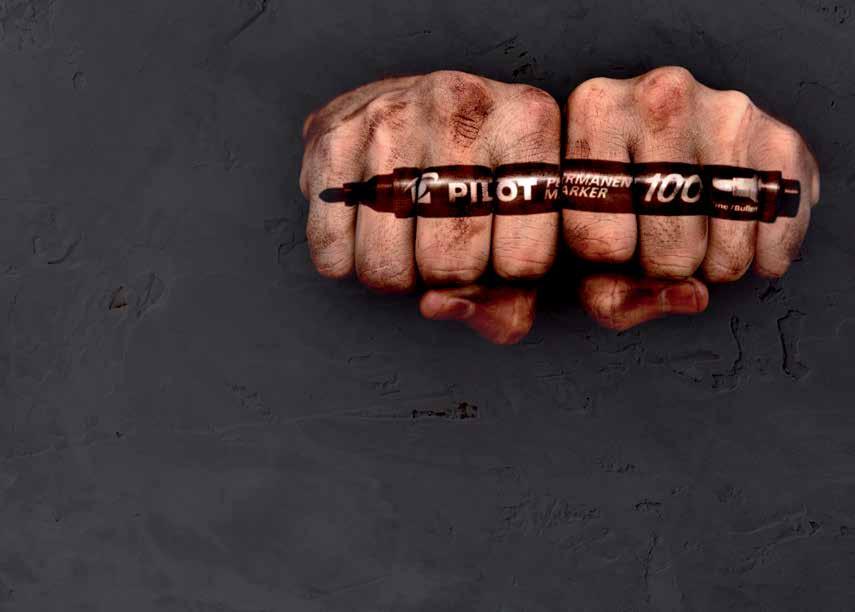
6 minute read
Best of breed solutions for the entire
With a voice interface operators only get the next set of instructions needed for the task.
BEST OF BREED SOLUTIONS FOR THE ENTIRE VALUE CHAIN
The e-commerce revolution has changed the traditional warehouse and distribution centre model. What kind of solutions should be deployed to meet this change?
As we push further towards the e-commerce model I think we’re seeing a major change in the way that distribution centres are being run,” James Hendrickson, Director of Product and Offering Management at Honeywell Voice Solutions says. In a recent Warehouse of the Future report by property developer JLL, the organisation revealed that distribution centres are changing due to the continued growth of e-commerce and last-mile delivery. This type of warehousing is driving significant demand for industrial properties, as well as innovation in terms of how assets are built. James echoes this by pointing out that 10 to 15 years ago, organisations were building huge warehouses to deal with rising demands, but now people are looking for small DCs in city centres to meet home deliveries. “Ten years ago, when organisations were building warehouses covering 100,000 square metres nobody would have thought that we would be moving towards a more boutique warehouse trend to meet home delivery for consumers living in city centres,” he says. The report also revealed a similar pattern, with 60 per cent of new warehouse development made up “
of facilities from 50,000 to 250,000 square feet. “Warehouses now need to be able to handle a variety of different types of product and picking styles. The effects of this change in demand is far-reaching. You have to rethink how you design a DC, how many and what type of dock doors are needed, how you train your workers, the list goes on,” James says. One area that tech can play a crucial role is in the changing tasks of warehouse workers. Historically workers used to do the same task over and over again, but now there might be multiple tasks at different types of the day. When demand changes, so does the task. With this in mind, organisations cannot afford to spend a lot of time on-boarding workers and training them up when demands are so high, James says. “Organisations need the ability to onboard or recruit workers and get them out there working as soon as possible. They need to be trained as quickly as possible without a lot of over heads.”
FLEXIBLE END-TOEND SOLUTIONS Organisations often find themselves looking at technology and automation and wondering which solution is best for them. According to James, one common issue is that people think in silos
“It’s so important to think about this kind of technology holistically. You need to think about your entire value chain from end-to-end. You need to think about solutions that fit the need you have now but that will also grow and scale with you either up, down or across,” he says.
For James, the most important thing is to implement solutions that are flexible. For him, this is the great benefit of voice solutions. “The flexibility, productivity and accuracy you get with voice is comparable to any other kind of advanced technology, but its flexible enough to be deployed to a number of different environments very quickly.”
Voice solutions can move with the worker from a city centre depot, onto the truck as a moving warehouse, into the retail store or the main DC. This would be difficult to do with other technologies like automation.
A voice interface is also easy to learn. “With voice, you only get the next set of instructions you need. The instructions guide you through the task at hand. There is virtually no training required. Additionally, you don’t need to have years of experience or a digital native, it really is easy for everyone to pick up,” James says.
SELECTING THE RIGHT PARTNER When considering what steps to take in introducing technology and solutions to meet the changing environment of the DC, James says it’s about finding an integrator who has access to all the technology that you may need, either now or in the future. “You need to be crystal clear about what your problems are, where you’re going in the future and then look for a vendor who has access to all of that technology,” he says. At Honeywell, it’s all about de-risking the supply chain. “You want to find a vendor or integrator who has the most expertise and most access to tech so that you de-risk your entire project. Once you get further down the line in terms of technology implementation, the last thing you want in your critical supply chain is for two large vendors squabbling, especially if they are from different areas of the world.”
Honeywell has a full portfolio and suite of products as well as a large network of reseller channels. “Finding the right partner that will support you
in a variety of different tech solutions is absolutely critical as your supply chain becomes more and more demanding,” James says.
EMPOWERING PEOPLE While technology is playing a big part in making workers carry out their jobs safely, accurately and efficiently it should really be in the background. “It’s easy to talk about quick scan performance or conveyor performance but the goal is to enable workers to be as successful as they can be. That’s how we think at Honeywell. The tech should be in the background and should continue to empower the worker, that’s true transformation,” James says.
This approach can also be applied to introducing robotics in the warehouse. Where there is a task that could be done by a robot to save time, wear and tear on the body, it should be. But it should also be about the robot and the human working together.
“We believe that robots and existing workers will co-exist because they both have specific things that they can do better than each other. They can empower the worker to be as successful James Hendrickson, Director of Product and Offering at Honeywell Voice Solutions.

as they can be,” James says.
Honeywell is developing robot interfaces that workers can relate to. “We’ve deployed our voices solution interface into our robots to create a Cobot type experience. We believe it’s about bridging the capabilities that people have with the repetitive skills and ability that the robot has so that we can create a safer and more accurate enviro nment today and in the future.” ■
Tough markers for tough work.


Make your mark fast, reliably, without fuss – put some Pilot Permanent Markers in your toolbox. Made in Japan using new permanent oil-based ink technology with class-leading performance in four vivid ink colours. They write on almost anything – cartons, plastic, wood, paper and metal – they’ll even write over grease or oil. The marker also guarantees a 24 hour cap-off life – a tough marker for tough jobs. Go to pilotpen.com.au/permanent-marker for more information.









